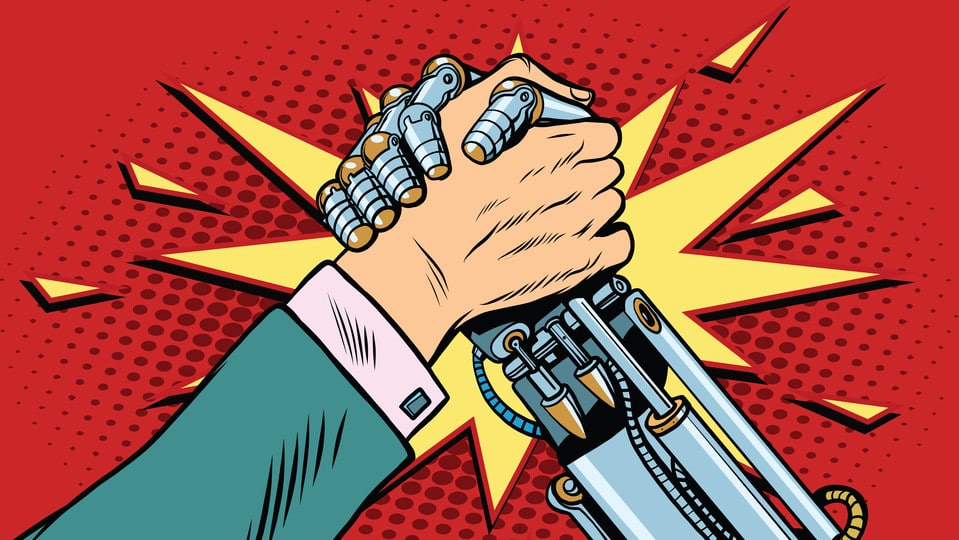
We are no longer in an era of change, but a change of era.
– Andy Stalman
The world of work is changing significantly.
As pointed out in Forbes, “change is occurring simultaneously, accelerating quickly, and creating so much complexity and uncertainty that even the savviest executives question whether they’re prepared for the revolution ahead.”
Since this is so, I’ve decided to cover changes in the world of work, in two parts.
Part I covered changes in the world of work that are already here, today. What do younger generations expect, what are the characteristics of the modern workplace, and what do employers- including finance executives- need to know and take into account?
This article, part II, will focus on the world of work of the future- what skills will be valued, what jobs will emerge, and how will we deal with the increased presence of technology?
Every employer and employee should know and understand the new norms. Read on to get a better understanding of the world of work of tomorrow.
47% of today’s jobs will be gone in 10 years.
(Oxford Economics, National Bureau of Economic Research, and Bureau of Labor Statistics)
With advances in technology we will witness the emergence of novel positions, the automation of some jobs, and the elimination of others.
According to consultancy firm Cognizant, among the interesting jobs of the future you can find data trash engineer, chief purpose planner, and virtual identity defender.
58% [of employees] believe they will have a new career within five years.
(Deloitte Human Capital Trends 2017)
“The era of the lifer is over. We’re living in the era of the portfolio builder.”
– Jay Liddell
According to Bloomberg BusinessWeek, “in a survey of job-seekers aged 34 and under conducted by ZipRecruiter, fewer than half of respondents said they expected to stay in the same industry long-term.”
A 2019 Millennial Manager Workplace Survey reports that 75% of millennials believe that constantly changing jobs advanced their careers.
With the portion of Gen Y and Z in the workforce increasing, we will see less long-term commitment from employees. This will lead to changes in the psychological contract between employers and employees.
Job capabilities for the future primarily consist of intangibles.
(Talent for survival Essential skills for humans working in the machine age, Deloitte UK, 2016)
- Empathy
- Communication
- Interpreting data
- Judgement
- Social skills
- Integrated thinking
Humans have the upper hand when it comes to intangible skills that are not seen, but felt.
Digital technologies are not detracting from employees’ worth. Rather, they are empowering employees to do more of what machines cannot do, more of the things that make us uniquely human. These are the skills that will be of most value in the future.
Learning as an ongoing process: learn for life.
Workers will have to engage in life-long learning if they hope to have long-lasting careers. The skills expected in the labor market are changing quickly leaving employees always on their toes, trying to keep up with the pace.
67% of employees believe they must continuously reskill themselves to stay in their career.
Agile learning is key, according to the World Economic Forum, for current workers to shift to “new, previously unimagined futures.”
For companies, this means upskilling and reskilling their workforce. Within organizations learning and development will become increasingly important. This will be felt throughout all departments, including finance, as employees will have to continuously familiarize themselves with novel software, programs, and systems.
Change is nothing new.
All of these changes should not scare or startle us. If you look back throughout history, humanity has seen many significant revolutions:
- The first industrial revolution involved a change from mostly agrarian societies to greater industrialization.
- The second industrial revolution was driven by electricity and involved the expansion of industries and mass production in addition to technological advancements.
- The third industrial revolution involved the development of computers and IT (information technology) since the middle of the 20th century.
We are in the midst of the fourth industrial revolution which brings together physical, digital, and biological systems. Driven by disruptive technologies such as robotics, virtual reality, AI, and the internet of things (IoT), it is altering our world, including the realm of work.
Change is not necessarily bad, just different.
We all know that change can be scary. But really, it doesn’t have to be. It all depends on how we look at it.
Technology has the power to enable us. For employees, it can empower us to revision what it means to work.
How do we define work? What is its role in our lives? How do we go about working? What does working mean for us?
“History tells us that a values shift is triggered by the creation of a new story about how we want to live.”
-Steward Wallis, New Economics Foundation, UK
We must shift the narratives we have been telling ourselves. Because today, especially with technology, we can.
From employers’ standpoint, technology can empower businesses to be more productive, efficient, and engage in activities with greater value-added. At Datarails our goal is to help businesses do just this. We aim to help finance professionals embrace change and technology with as minimal difficulties as possible.
Our technology is an FP&A enabler, allowing you to get the job done as best as possible. Integrating our technology means you acknowledge that change is necessary and have chosen to work with the platform that makes the transition as smooth as can be. With Datarails you can enjoy the ride, with as minimal bumps as possible.
About Datarails
Datarails is an enterprise-class software that empowers each finance professional to independently work with data and deliver actionable, data-driven insights. Finally, count on numbers you can trust and reduce inefficiencies without having to change how you work on Excel. With Datarails, strengthen the connection between finance and operations to drive better organizational decisions.